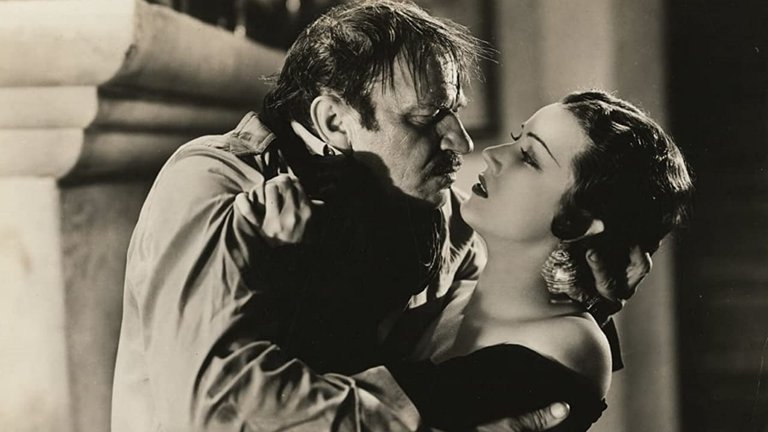Film Review: Viva Villa! (1934)

The birth of Hollywood coincided with the Mexican Revolution, allowing Californian filmmakers to draw inspiration from the events across the border, particularly those related to the larger-than-life figure of Francisco "Pancho" Villa (1878–1923), the most iconic of all revolutionary leaders. Even Villa exploited this fascination by allowing Hollywood to make a feature film starring himself for his own propaganda purposes. Although Villa was just one of the many faction leaders and was marginalised in his later years, for everyone outside Mexico, he (and, to a lesser degree, Emiliano Zapata) is the only name associated with the Mexican Revolution. Hollywood played a crucial part in this, thanks to films that often sacrificed historical truth for the sake of spectacle and melodrama. One of the earlier examples is Viva Villa! (1934), a film directed by Jack Conway.
The film begins with opening titles that provide a disclaimer, stating that what the audience is about to see is a work of fiction. This is followed by a prologue set in the 1880s, when Mexico was under the rule of the tyrannical President Porfirio Diaz and rich aristocratic landowners who held peasants as hardly better than slaves. When Diaz’s decree takes away peasants’ land, Villa’s father (played by Francis Puglia), a peasant, protests only to be flogged to death on the property of Don Rodrigo (played by George Regas). Young Pancho Villa (played by Philip Cooper) takes immediate revenge by killing Don Rodrigo and escaping to the hills of Chihuahua, where he would join bandits. Many years later, Pancho Villa (played as an adult by Wallace Beery) is the leader of a large group of bandits that enjoys peasants’ support due to their actions against landowners and tyrannical government officials. Young aristocrat Don Felipe de Castillo (played by Donald Cook) contacts Villa and proposes that he meet Francisco Madero (played by Henry B. Walthall), a liberal politician who wants to start an uprising against Diaz and provide land reform that would benefit peasants. Villa, initially very reluctant, joins the movement and scores a series of great victories that would be chronicled by John Sykes (played by Stuart Erwin), an American news reporter who becomes Villa’s friend. Villa also finds an enemy in Madero’s general, Pascal (played by Joseph Schildkraut). When Diaz’s regime falls, Villa decides to disband his army, only to later get himself exiled to Texas before Pascal murders Madero, takes power for himself, and stops the land reform. The news finds Villa in El Paso, where he decides to start the revolution from scratch. His army quickly grows, defeats Pascal, and Villa triumphantly enters Mexico City, only to find politics and actual governing much more challenging than fighting a war.
Made by MGM, the grandest Hollywood studio at the time, Viva Villa! had a long and difficult production. Shooting on locations in Mexico was beset with logistical and political problems, the latter due to the Mexican government’s fear that American filmmakers might misuse their national icon. Howard Hawks, originally hired as director, was fired from the set, along with some cast members who created embarrassing incidents. Despite this, Viva Villa! was a decent box office hit and even had four Oscar nominations. The reason for this can be found in the solid direction by Jack Conway, which never allowed the epic story to look too boring and provided some rather impressive battle scenes. Another major contribution was the script by legendary writer Ben Hecht, which replaced complex realities of the Mexican Revolution with a less accurate but much simpler story, while also recognising that Villa wasn’t a person who could be easily fit into categories of hero and villain. While his cause is described as just and heroic, some of his actions aren’t — at times he comes across as uneducated, crude, petty brute; at times as nothing short of war criminal, and, finally, as rapist. General Pascal, the film’s (fictional) main villain, is dispatched by Villa in an incredibly vicious and cruel manner. That scene and references to rape and some suggestive dancing in which Anita Gordiano shows her underwear remained in Viva Villa! only because the infamous MPAA Production Code came into effect only months after the premiere. However, despite some flaws, especially those related to the rushed and overmelodramatic ending, this film represents a good example of Hollywood craftsmanship. Much of the credit must go to Wallace Beery, a character actor who usually played buffoons but who here makes the audience like Villa despite his serious flaws. Henry B. Walthall is much less effective as the saintly Madero, while Fay Wray gets wasted in the role of Felipe’s sister Teresa, introduced only to provide extra melodrama to the story. Viva Villa! — despite its cavalier attitude to history — is a film to be recommended to fans of 1930s Hollywood.
RATING: 5/10 (++)
Blog in Croatian https://draxblog.com
Blog in English https://draxreview.wordpress.com/
Leofinance blog https://leofinance.io/@drax.leo
Unstoppable Domains: https://unstoppabledomains.com/?ref=3fc23fc42c1b417
Hiveonboard: https://hiveonboard.com?ref=drax
Bitcoin Lightning HIVE donations: https://v4v.app/v1/lnurlp/qrcode/drax
Rising Star game: https://www.risingstargame.com?referrer=drax
1Inch: https://1inch.exchange/#/r/0x83823d8CCB74F828148258BB4457642124b1328e
BTC donations: 1EWxiMiP6iiG9rger3NuUSd6HByaxQWafG
ETH donations: 0xB305F144323b99e6f8b1d66f5D7DE78B498C32A7
